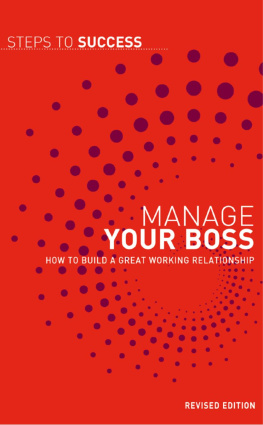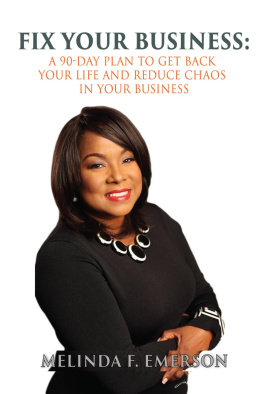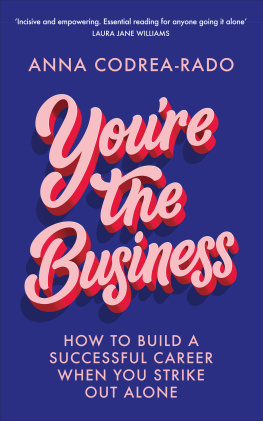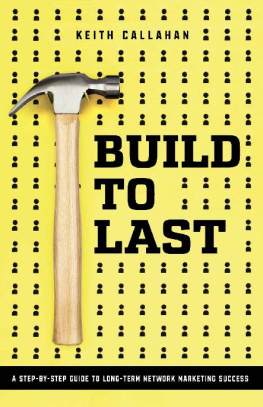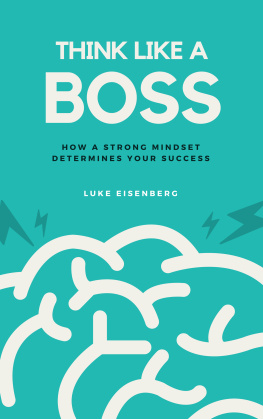

About the Authors
Debbie Wosskow
Debbie Wosskow, co-founder of AllBright, is the former CEO of Love Home Swap, a subscription-based home exchange business, which she sold for $53m in 2017. She is a Member of the Mayor of Londons Business Advisory Board and sits on the Board of the Womens Prize for Fiction. In 2016 Debbie was awarded an OBE for her services to business. She won the Evening Standards Business Award for Entrepreneur of the Year 2018 and was shortlisted for City AMs Entrepreneur of the Year Award 2017.
Anna Jones
Anna Jones is a British business woman and entrepreneur, and co-founder of AllBright. She served as CEO of Hearst Magazines UK until April 2017 where she transformed the business, growing audiences digitally and expanding into events, licensing and brand services. Anna joined the Board of the Creative Industries Federation in 2015 and from May 2017 to April 2018 served on the Board of Telecom Italia.
Debbie and Anna provide not only inspirational examples of women, but also offer a step-by-step guide as to how women can get ahead in their careers. Central to the book is the most important message of all that as women we need to support and champion each other all the way to the top. A sisterhood is the key to success.
Nicola Mendelsohn, VP of EMEA
Women are incredible and can achieve anything if they put their minds to it, and women supporting other women is the key to our success. We need more women leading businesses, and this book will help to inspire women to reach the top.
Kelly Hoppen, proprietor of Kelly Hoppen Interiors
As a proud feminist I believe we must do all we can to remove any barriers to womens success and to unlock their full potential, and Debbies passion to equip women with the confidence and skills to reach the top in their careers is truly inspiring.
Sadiq Khan, Mayor of London
I loved this book and the message behind it Im passionate about the women in my life, and really believe that the way to promote women in all kinds of business is the way to equality. This is a really hands-on guide to working out what you want and the practical steps to getting it.
Melissa Hemsley, author of The Art of Eating Well, Good + Simple and Eat Happy
I have always been lucky to have a strong base of female friends in my business and we give each other advice on everything from working motherhood to navigating office politics. Believe, Build, Become astutely identifies that this female solidarity is fundamental to success and equality. This is an important book with a crucial message.
Nancy Josephson, Partner, WME
It is so important to instil these values in women. This knowledge is great power and will gift its reader the autonomy they need and deserve.
Jameela Jamil, actress, model, presenter and activist
We all have those moments of doubt, and thats when we need our sisterhood to have our backs, not just as a support network, but as cheerleaders too. This is the central message behind Believe, Build, Become, and something I passionately believe in. If we want to see a world where women are in an equal number of top jobs as men, then its essential that we propel each other forward and support each other. Men have been doing it for years; its time for women to do the same. As Debbie and Anna say, the sisterhood works.
Farrah Storr, editor-in-chief of Cosmopolitan
Any references to writing in this book refer to the original printed version. Readers should write on a separate piece of paper in these instances.
Introduction
We first met each other at a party in 2015, introduced by someone who said, You two should be friends. And over that initial gin and tonic and the breakfasts and dinners that followed we realised that we were two strangers thinking the same thing. In an age where feminism is plastered on T-shirts, pop stars routinely sing about female empowerment and women are more likely than men to go on to higher education, why were there still so few women leading in business?
We came together at a point where wed both had 20 years in the world of work, and despite having taken very different paths Debbie as an entrepreneur and Anna as an executive in corporations rising to the top job of CEO we both still saw around the same number of women at the top as when we started in the late 1990s.
How had nothing changed?
As we discussed the topic more, we found out we had similar backgrounds: we were both raised by strong women with mothers and grandmothers who worked; we did well at school and university and then crashed with a shock into the world of work, expecting the equality we were brought up with but instead finding that the real world was very different. The world of business was and still is controlled by men for men. The statistics make for depressing reading. In the world of entrepreneurship, only one in five businesses in the UK have female founders and female-run businesses only attract around 2 per cent of venture capital funding in the UK and US. In the corporate world the glass ceiling is still very much intact: in the US, only 4.8 per cent of CEOs of Fortune 500 companies are women; in the UK there are now only six CEOs of FTSE 100 companies, and globally women account for less than a quarter (24 per cent) of senior roles, according to Catalyst data.
And yet, Data shows that women CEOs in the Fortune 1000 drove three times the returns compared to S&P 500 enterprises run predominantly by men, says Craig Newmark, advisor to Women Who Tech, a Washington-based initiative. Meanwhile, a spokesman for the UK government suggested untapped female entrepreneurship may be the greatest economic opportunity of the twenty-first century. It literally pays for business and indeed for society to have women at the top.
So why were there so few of us leading companies? We had both worked with extraordinary women who wed seen held back by invisible forces. As we chatted, we realised that for us, enough was enough. Now we had reached positions where we could do something about it, we needed to help change the conversation. Because change needed to happen, and it needed to start now. Neither of us wanted to see our young daughters enter a workforce where these barriers still exist.
As we picked apart our very different routes to success Debbies as a multiple business founder, with her last business Love Home Swap selling for $53 million, and Annas as the CEO of Hearst magazines, a company with a 100-year history of selling magazines to women, but never having a woman in the CEOs chair we realised there was a common theme. It is within the power of other women to help empower, improve and give you a leg-up, just as old boys networks have been doing for men for centuries.
We call it the sisterhood. We are happy reclaiming that 1970s feminist and campaigning term. For us, its about the gang of women who help build you up and believe in you so you become something even greater than you were at the beginning. Its not just a support network, although thats an important function, and were sure you have your own group of women in your personal life who act in this way. Instead the work sisterhood is a group of women who can be your own personal board of advisors; women you can turn to when youve got tough business decisions to make, who can prompt you to take that risk or put yourself forward for promotion. Its people who share their own networks to help push you up the ladder and you do the same for them in return.
Next page


